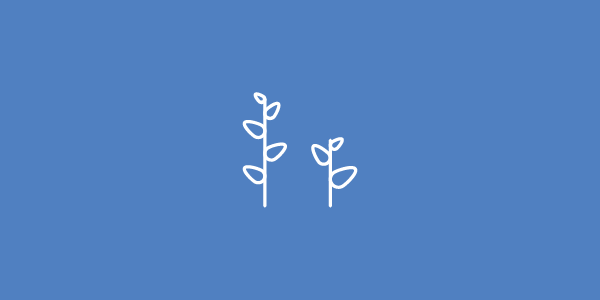14 Nature: sexual dimorphism, sizes and plant stages
Before to start to draw plants (under Nature category), is important to understand what is the Plant Sexual dimorphism, the Plant Sizes and the Plant stages.
Sexual dimorphism
Sexual dimorphism is the condition where the two sexes of the same species exhibit different characteristics beyond the differences in their sexual organs. Differences may include secondary sex characteristics, size, color, markings, and may also include behavioral differences.
In most species of insects, spiders, amphibians, reptiles, birds of prey, etc, females are larger than males, while in mammals the male is usually the largest, sometimes very noticeably.
Sizes
Before drawing an animal, plant or other type of living being, it is important to know the approximate size of the living being. Exact dimensions are not important as long as we have nice dimensions according to our 64px grid.
The reason why it is more important to follow our 64px grid than the real sizes is because same Species may be different in size or even in shape depending upon the circumstances of the region. The same species in two regions of the world could be even hard to recognize. That’s why it is important to follow some indications and then, to adjust to our system. Sometimes it is much simple, sometimes it is harder but as long as it is not wrong, it means it is perfect (don’t draw a cat bigger than an elephant), because the diversity of the nature works in our favor. Remember, also the sizes of different species of a genus can be different.
Try to find the information always in English (in that way, all of us will be able to reproduce your steps), but do not forget maybe in another language it may be much simple to find information for specific situations.
Some times all the information is collected in one place, sometimes it is spread around different places. If you need information about one Genus and there is not information about that, find the key Species of that Genus and find the minimum size and the maximum size of the adult stage (don’t forget about the specific parts like the tail).
Example:
In a minimum size of one Genus with 16-25 cm and 28-32 cm for the maximum (for different species), our Genus would be between 16-32cm (the minimum of the minimum and the maximum of the maximum) Those sizes in px are 18-36px. From now on, we do not work with cm anymore.
As we are drawing it with neutral size, it is better if we do not draw either the maximum or the minimum length. We need to choose some length that represents the Genus and looks nice in the screen. We choose 32px because it is a nice number that follows our modular approach, it is nice and does not matter in size between 18px and 36px. Also we choose 32px, instead let’s say 24px (another nice number), because 32px is one of the bigger possible sizes of the Genus but not the bigger one and 1/2 of 64 (we need to follow the modular approach as much as possible).
Once we know the size of the Genus, we can choose the template with the artboards with the correct sizes. For an illustration of 32px, the best artboard would be Template_XLXS_64-M. Then, we can draw each Genus of the Family in a different artboard.
Plant stages
For a deeper understanding of the growth stages, it is possible to follow the BBCH (Growth stages of mono-and dicotyledonous plants).
We do not need to worry about the Tree Life Stages as we are just creating the Pole. For the commercial Genus of Trees that are going to be uses as Base collection of plants, we will create the full life cycles of trees:
- Seed,
- Seedling: the above-ground part of the embryo that sprouts from the seed,
- Sapling: after the seedling reaches 1 m tall,
and until it reaches 7 cm in stem diameter, - Pole: young trees,
from 7 to 30 cm diameter, - Mature tree: reproductive years begin,
over 30 cm diameter, - Old tree: dominate old growth forest; height growth slows greatly, with majority of productivity in seed production,
- Overmature: dieback and decay become common,
- Snag: standing dead wood,
- Log/debris: fallen dead wood.
